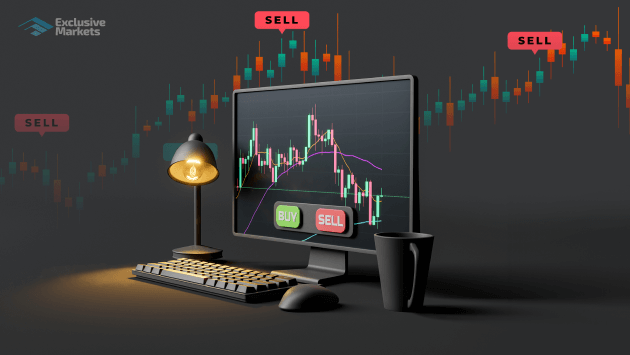
In the world of Forex trading, having a solid understanding of your Forex trading account is crucial. A forex trading account Trading Brokers account serves as a gateway for traders to enter the exhilarating domain of currency trading, allowing them to buy or sell currency pairs, access market analysis tools, and manage their investment strategies effectively. This article aims to provide a comprehensive overview of Forex trading accounts, including their types, how to open one, and tips for optimizing your trading experience.
What is a Forex Trading Account?
A Forex trading account is an online trading account that enables traders to participate in the foreign exchange market. This account is operated through a brokerage firm, which provides the necessary tools and resources for traders to execute transactions, analyze the market, and monitor their trading performance. Essentially, opening a Forex trading account is the first step for anyone looking to engage in currency trading.
Types of Forex Trading Accounts
Before opening a Forex trading account, it’s essential to understand the different types available. Generally, Forex accounts can be categorized into the following types:
- Standard Accounts: These accounts are designed for experienced traders and typically require a higher minimum deposit. They offer a wide range of features, including leverage, margin trading, and access to advanced trading tools.
- Mini Accounts: A mini Forex trading account enables traders to trade smaller contract sizes, making it a popular choice for beginners. The minimum deposit requirement is usually lower than that of standard accounts.
- Managed Accounts: In this type of account, professional traders manage the trading activities on behalf of the account holder. This option is suitable for individuals who prefer a hands-off approach but still want exposure to the Forex market.
- Islamic Accounts: These accounts comply with Islamic trading laws, which prohibit earning interest. They often come without swap fees and are suitable for Muslim traders.
- Demo Accounts: Forex brokers usually offer demo accounts for traders to practice trading without risking real money. These accounts simulate live trading environments, allowing users to familiarize themselves with trading platforms and strategies.

How to Open a Forex Trading Account
Opening a Forex trading account is a straightforward process, but it requires careful consideration. Here’s a step-by-step guide:
- Choose a Reputable Broker: Research various brokers and select one that aligns with your trading goals and offers the trading instruments you’re interested in.
- Complete the Application Form: Once you’ve chosen a broker, you’ll need to fill out an application form, providing personal details, financial information, and trading experience.
- Verify Your Identity: To comply with regulatory requirements, brokers often require you to submit identification documents, such as a passport or driver’s license.
- Fund Your Account: After your account is approved, you can fund it using various payment methods, including bank transfers, credit cards, or e-wallets.
- Begin Trading: Once your account is funded, you can start placing trades and managing your Forex portfolio.
Choosing the Right Trading Account Type
When selecting the right trading account, consider the following factors:
- Your Experience Level: If you’re a beginner, you might want to start with a mini or demo account to practice your skills.
- Capital Availability: Determine how much money you’re willing to invest, as this will influence your choice of account type.
- Trading Goals: Your trading objectives will play a significant role in the type of account you choose. Are you looking to trade actively, or are you interested in long-term investments?
Understanding Leverage and Margin

Leverage and margin are critical concepts in Forex trading. Leverage allows traders to control larger positions with a smaller amount of capital. For instance, a leverage ratio of 100:1 means that for every $1 in your account, you can control $100 in the market.
Margin, on the other hand, is the amount of money required to open a leveraged position. Traders must maintain a minimum margin level to keep their positions open. Understanding both leverage and margin is essential for managing risk and ensuring that you don’t overextend your trading capacity.
Risk Management Tips
Effective risk management is vital for long-term success in Forex trading. Here are some tips to mitigate risks:
- Use Stop-Loss Orders: These orders automatically close a trade when it reaches a certain loss threshold, helping to minimize potential losses.
- Limit Exposure: Avoid risking more than a small percentage of your total capital on a single trade.
- Diversify Your Portfolio: Diversification can help reduce risk by spreading investments across different currency pairs.
- Stay Informed: Keep abreast of market news and economic indicators that could impact currency prices.
Conclusion: Begin Your Forex Trading Journey
In conclusion, understanding the nuances of a Forex trading account is essential for anyone looking to trade in the foreign exchange market. By choosing the right account type, practicing effective risk management, and continually educating yourself about market dynamics, you can set yourself up for a rewarding trading experience. As you embark on your Forex trading journey, remember that patience, strategy, and a solid foundation are the keys to success in this exhilarating financial arena.
